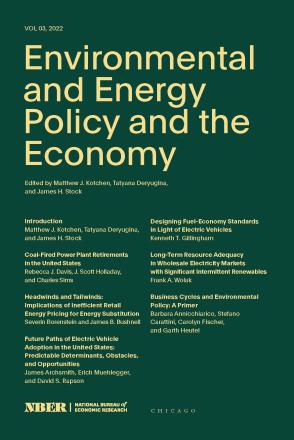Designing Fuel-Economy Standards in Light of Electric Vehicles

You may be able to download this chapter for free via the Document Object Identifier.
Electric vehicles are declining in cost so rapidly that they may claim a large share of the vehicle market by 2030. This paper examines a set of practical regulatory design considerations for fuel-economy standards or greenhouse gas standards in the context of highly uncertain electric vehicle costs in the next decade. The analysis takes a cost-effectiveness approach and uses analytical modeling and simulation to develop insight. I show that counting electric vehicles under a standard with a multiplier or assuming zero upstream emissions can reduce electric vehicle market share by weakening the standards. Further, there are tradeoffs from implementing a backstop conventional vehicle standard along with a second standard that also includes electric vehicles, but such a backstop offers the possibility of ensuring that low-cost conventional vehicle technologies are exploited.


